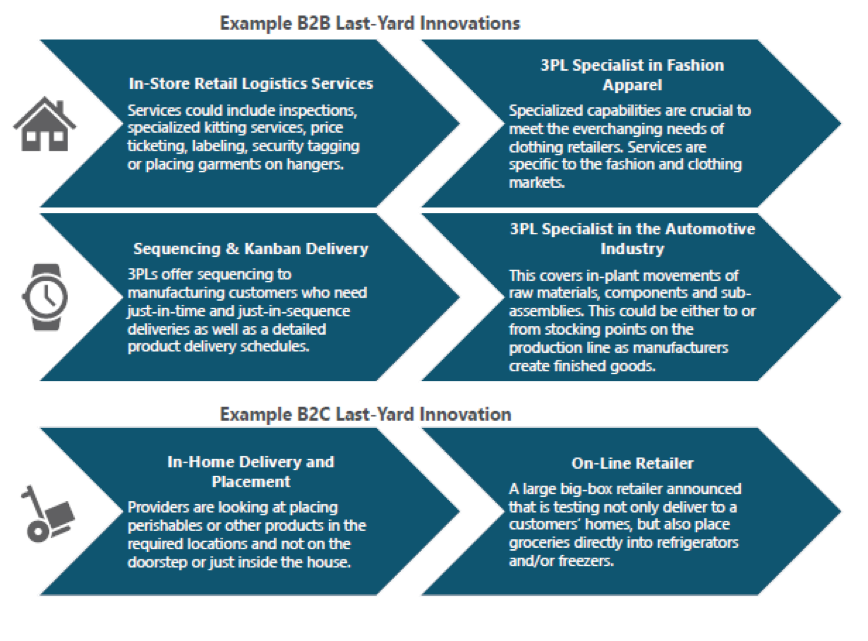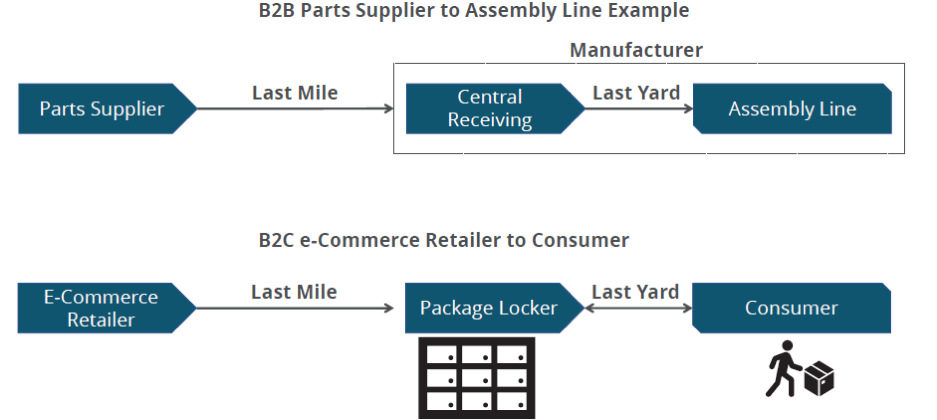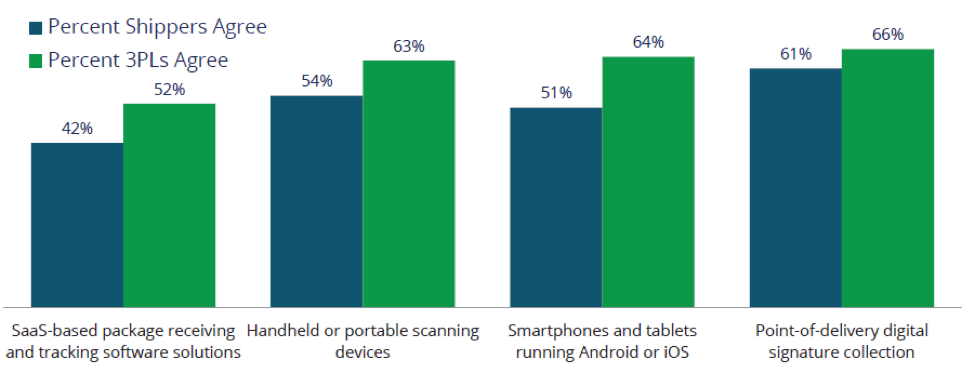 One of the great challenges in Urban freight involves the final 50 feet or last mile, with cities struggling to provide adequate curb side space for all road users while continuously failing to account for increased freight demand. To better attack this issue, Dr. C. John Langley Jr., (Clinical Professor of Supply Chain Management at Penn State University) and his team used the 2019 Third-Party Logistics Study (23rdannual) to introduce the “last yard” concept. This accounts for what happens to the freight after it arrives to the business (B2B) or consumer (B2C) but is then routed to a specific location.
One of the great challenges in Urban freight involves the final 50 feet or last mile, with cities struggling to provide adequate curb side space for all road users while continuously failing to account for increased freight demand. To better attack this issue, Dr. C. John Langley Jr., (Clinical Professor of Supply Chain Management at Penn State University) and his team used the 2019 Third-Party Logistics Study (23rdannual) to introduce the “last yard” concept. This accounts for what happens to the freight after it arrives to the business (B2B) or consumer (B2C) but is then routed to a specific location.
The advantage of using last yard as barometer is that it better determines if the customer’s needs are fully met. (see examples below):

(Source: 3PL_2019_Study)
As the supply chain becomes more complex and deliveries are required to arrive faster, and faster it is clear that last mile tracking isn’t enough and tracking freight to the next step is necessary (see below):

(Source: 3PL_2019_Study)
In addition to increased freight demand the increased security and control over the freight from the point of origin to the final destination have raised issues over the effectiveness, efficiency, and security of the freight. Some of the major observations are:
- Declining use of “snail” mail and increased use of physical packages.
- Seasonal demand such as free next day or two-day shipping around the holidays.
- Increased personal packages being shipped to the office.
- Increased value in the packages themselves.
- Growth in perishable shipments.
These issues have in turn highlighted to constrains on the current supply chain and last mile model in the following ways:
- Loss of staff productivity as staff is under added pressure to facilitate a growing number of shipments.
- Physical lack of storage capacity.
- Poor performance of mail centers.
Using 3PLs may solve some of these issues as more companies are specializing in last mile and last yard logistics. Of course, by better understanding these issues shippers should be able to improve their internal systems. The most concerning last yard logistics issues are delayed, damaged, misplaced, or lost deliveries (see full breakdown below):

(Source: 3PL_2019_Study)
With technologies being designed and adapted to facilitate last yard deliveries there are various options that can be used to ensure the efficient, effective, and safe transportation of freight to the end user (see below):

(Source: 3PL_2019_Study)
As both business and consumer buying habits change it is vital that the supply chain keep up. It is also vital that cities keep up and provide the necessary space to meet these demands. This is where last mile and last yard can distinguish themselves. Providing the necessary infrastructure for the last mile is something cities must factor in, in partnership with the shippers and receivers. That last yard infrastructure is for the shippers and 3PLs to provide for.
Leave a Reply